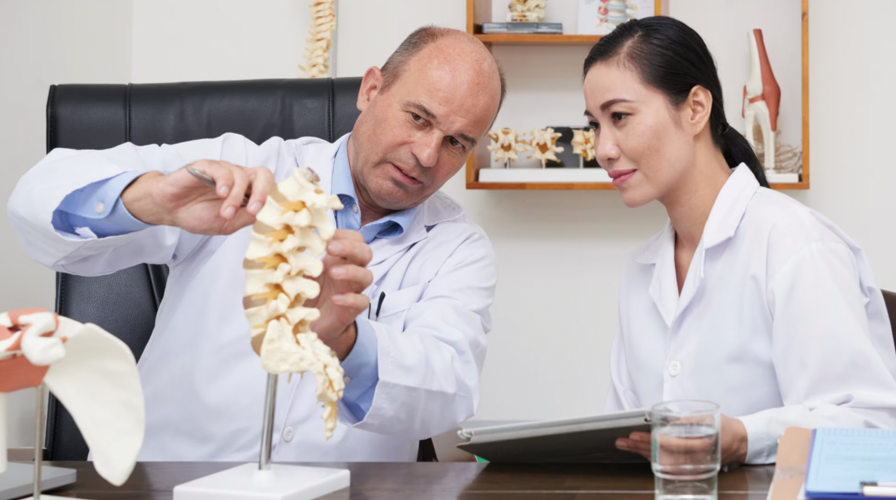
In 2022, one Dallas couple took to social media to ask for support for their infant daughter, Aniya. At only one month old, she was beginning to lose control of the muscles in her legs and tongue. Doctors diagnosed her with a rare genetic disease called Spinal Muscular Atrophy which affects approximately 1 out of every 10,000 people. SMA slowly kills nerve cells in the brain stem and spinal cord that control essential physical functions, including standing, walking, talking, and breathing.
But for Aniya’s mom and dad, their concerns only began with the diagnosis as the parents soon discovered that the one-time gene therapy treatment Aniya would need to fight the disease came at a price — $2.1 million — and the insurance company wasn’t covering it.
Aniya’s mother immediately reached out to other families with SMA on social media who put her in touch with a compassionate attorney who took on the family’s legal case pro bono. After four months of conversation with their insurance company, Baby Aniya finally got the care she needed (Texas Family Overcomes Fight for $2.1M Medication – NBC 5 Dallas-Fort Worth (nbcdfw.com).
This year, her parents can breathe a sigh of relief and — this August — they joined with other Dallas families in recognition of Spinal Muscular Atrophy Awareness Month. Other children and adults, however, continue to battle this condition every day. At Reunion, we join these patients in their fight for a cure while our physical therapy team works alongside them to improve their quality of life. Here, we’re outlining how Reunion’s physical therapy specialists can help patients with SMA live the lives they deserve.
How We Help
While most SMA patients develop the condition in childhood, 5% of patients develop SMA over the age of 21 (https://www.everydayhealth.com...(MDA). Patients with SMA who choose to undergo physical therapy with Reunion often have three major treatment goals: improved mobility, pain management, and assistive device training.
Mobility
Physical therapy is critical for patients with SMA working to maintain, restore, or improve their mobility. The condition progresses slowly, so it’s important that patients optimize the time they have in treatment. Reunion physical therapists primarily focus on walking mobility, joint range, and balance. For sixty to ninety minutes each day, the Reunion physical therapy team works with SMA patients to improve their gait cycles, which include skills such as stepping, landing on one foot, and lifting their feet.
The physical therapy team also trains patients to manage their energy levels. Fatigue is one consequence of SMA and, at Reunion, we provide patients with personalized exercise routines they can use to build strength and increase their physical endurance long after they’ve left the hospital. Additionally, Reunion therapists help patients improve their flexibility which can help them control spasticity or involuntary muscle movements. Muscle-lengthening exercises, such as yoga and resistance training, can prevent muscle stiffness and deterioration.
Pain Management
Spasticity and other symptoms of SMA can lead to pain. As patients struggle to control muscle movements over time, their muscles begin to cramp. They may also begin to experience weakness due to difficulty standing and sitting. While Reunion physical therapists offer treatment for managing pain, Reunion also works with the best physicians and spinal cord specialists in every community we serve. By combining physical therapy with these medical interventions, patients can learn to not only manage their pain but prevent it.
AssistiveDevices
As patients cope with muscle weakness and pain, assistive devices may become integral to their care. Reunion's occupational and physical therapy specialists partner with technical experts to teach patients to use ambulatory devices such as canes and walkers. When patients require orthotic bracing, physical therapists work with technicians to find solutions for foot, knee, and/or hip weakness. These devices are customized to each patient’s individual strength and fitness and can enhance their mobility and range of motion.
For patients with SMA, maintaining proper posture is also essential to managing muscle weakness. Wheelchairs can help these patients prevent postural abnormalities, ensuring proper alignment of the head and extremities. Expertly-designed wheelchairs also minimize overuse injuries, particularly among patients with upper extremity or trunk weakness.
In addition to providing treatment for families and patients battling SMA, the Reunion physical therapy team provides comprehensive and individualized recovery plans for patients with many other conditions and injuries, including stroke, neurological injuries, amputation, and major multiple trauma. Many of our physicians are also experts in the treatment for spinal cord injury and conditions (https://reunionrehabhospital.com/news/phoenix-announces-medical-director/) Poster 305: Changes in Resiliency During Inpatient Rehabilitation Following a Spinal Cord Injury - Archives of Physical Medicine and Rehabilitation (archives-pmr.org). To learn more about the conditions Reunion treats, visit https://reunionrehabhospital.com/patients/services/.
More Articles